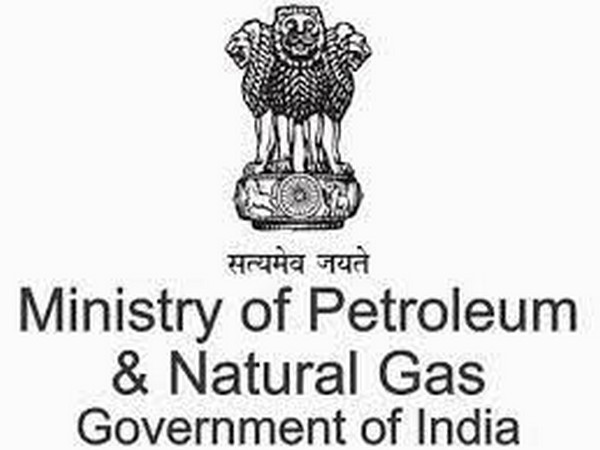India Unveils Draft Petroleum & Natural Gas Rules 2025 to Spur E&P Reforms
The revised Model Revenue Sharing Contract (MRSC) reflects the new operational and fiscal realities of the sector.

- Country:
- India
In a major stride toward revitalizing India’s upstream oil and gas sector, Union Minister for Petroleum and Natural Gas Shri Hardeep Singh Puri announced a comprehensive set of policy reforms anchored in the Draft Petroleum & Natural Gas Rules, 2025. Unveiled under the leadership of Prime Minister Shri Narendra Modi, the draft rules are positioned as a game-changer for India’s energy sector, with a strong emphasis on ease of doing business, environmental sustainability, and technological integration.
“The upcoming reforms are a significant milestone in our journey to make India a global hub for energy exploration and production (E&P). With the Draft Petroleum & Natural Gas Rules, 2025, and complementary policy initiatives, we are creating an ecosystem that is transparent, investor-friendly, and future-ready,” said the Minister. He called on all stakeholders—industry experts, E&P operators, and citizens—to review the draft rules, the revised Model Revenue Sharing Contract (MRSC), and the updated Petroleum Lease format and submit their comments by 17th July 2025 to png-rules@dghindia.gov.in. The policy consultation will culminate at Urja Varta 2025, a flagship energy dialogue to be held at Bharat Mandapam, New Delhi, on the same date.
Key Highlights of the Draft Petroleum & Natural Gas Rules, 2025
1. Investor Protection Through Stabilisation Clause
A hallmark of the draft rules is the introduction of a stabilisation clause to protect lessees against the adverse impacts of future legal or fiscal policy changes. If taxes, royalties, or levies are increased post-contract, lessees will be entitled to compensation or deductions, offering greater fiscal predictability and investor assurance.
2. Infrastructure Sharing for Efficiency
To reduce duplication and foster a level playing field, lessees are mandated to declare underutilised infrastructure capacity, such as pipelines and processing facilities, and allow third-party access on non-discriminatory terms. This is expected to unlock access for smaller players and encourage collaborative infrastructure usage under regulatory supervision.
3. Integration of Renewable and Low-Carbon Projects
In a first, operators will be allowed to develop integrated renewable energy projects—including solar, wind, hydrogen, and geothermal—within petroleum lease areas. This progressive move aligns with India's commitment to a low-carbon future and encourages energy co-location and innovation, provided these projects meet safety criteria and do not interfere with ongoing hydrocarbon production.
4. Environmental Governance and CCS Framework
The draft introduces detailed protocols for:
-
Monitoring and reporting of greenhouse gas (GHG) emissions
-
Establishing regulatory pathways for carbon capture and storage (CCS)
-
Setting up site restoration funds, with minimum five-year post-closure monitoring
This makes environmental stewardship a central tenet of exploration operations and prepares the sector for stricter climate accountability.
5. Tighter Control on Operational Data and Samples
All operational data and physical core samples will now be owned by the Government of India. While lessees may use the data internally, external usage or export requires prior government approval, with confidentiality maintained for up to seven years. This reinforces data sovereignty while ensuring valuable subsurface information is preserved for national interest.
6. Regulatory and Dispute Resolution Mechanisms
The draft proposes a dedicated Adjudicating Authority of Joint Secretary rank or higher, empowered to:
-
Enforce compliance
-
Resolve disputes swiftly
-
Impose penalties in case of violations
It also simplifies legal and operational procedures for unitisation of reservoirs across multiple blocks, merger of lease areas, and lease extensions, thereby improving operational flexibility and speeding up project timelines.
Modernization and Legislative Overhaul
These draft rules are set to replace the archaic Petroleum Concession Rules of 1949 and the Petroleum and Natural Gas Rules of 1959, modernizing the legal backbone of India’s upstream sector. They complement the recent amendments to the Oilfields (Regulation and Development) Act, 1948, and lay the groundwork for the upcoming OALP Round X, India’s largest-ever bidding round for exploration blocks.
Revised MRSC and Petroleum Lease Format: Aligning Incentives with Clarity
The revised Model Revenue Sharing Contract (MRSC) reflects the new operational and fiscal realities of the sector. It incorporates terms that encourage lease consolidation, reservoir unitisation, and shared infrastructure usage, ensuring synergy with the updated regulatory framework.
Meanwhile, the new Petroleum Lease format clearly delineates the rights and responsibilities of leaseholders, particularly concerning relinquishment, extension criteria, and cancellation triggers. This provides greater certainty and reduces operational ambiguity for investors.
Stakeholder Engagement and Vision for the Future
Calling for collective ownership of these reforms, Shri Hardeep Singh Puri said, “It has never been easier, faster, or more profitable to explore oil and gas in India. Through these reforms, we are committed to building an E&P regime that is world-class, agile, and aligned with our energy transition goals.”
He emphasized the importance of stakeholder participation ahead of Urja Varta 2025, where the final framework is expected to be discussed and refined with industry and public input.
The Road Ahead
India’s new policy direction for its hydrocarbon sector is both ambitious and inclusive. With sustainability, ease of business, and technological foresight at its core, the Draft Petroleum & Natural Gas Rules, 2025 could usher in a new era for domestic and foreign investors alike. The consultation window—open until 17th July 2025—offers a rare opportunity to shape the future of India’s energy security and low-carbon transition.










